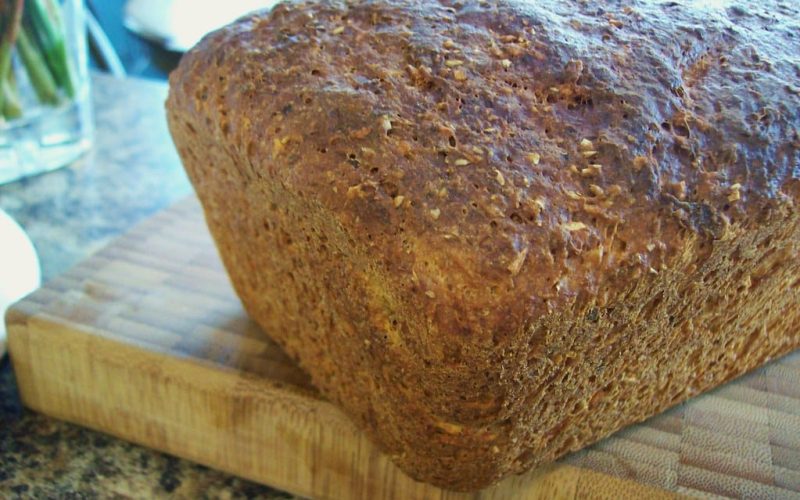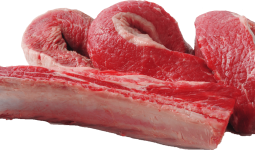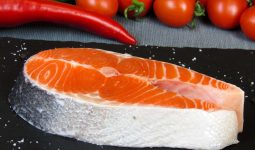Coconut bread is moist, flavorful bread with a nutty coconut taste that is flakier than sliced bread and has a texture like banana bread.
The ingredients for coconut bread are fairly easy to assemble. Of all these ingredients, products obtained from coconut form a key component.
It could be coconut flavor, milk, flakes, or a combination of all three. In this article, the ingredients for coconut bread will be explored.
Keep reading!
Ingredients for Coconut Bread
As mentioned earlier, this article aims to outline the ingredients for coconut bread. The ingredients are;
1. Flour
Flour, a key ingredient in baking bread, is among the key ingredients for coconut bread. It plays an important role in bread quality and forms the bread’s volume and eventual structure.
Different types of flour are in the market so that you can choose one of your choices. But ideally, you could go for all-purpose flour or plain flour.
Another type of flour some people like to use here is coconut flour. But, it is important to note that using coconut flour to bake does not make coconut bread.
This is because coconut flour has no milk, and most oils have been removed.
Hence coconut flour does not have a strong coconut flavor. Its flavor is mild and would be masked by any strong flavor during baking.
Nevertheless, that cannot stop you from using coconut flour. Suppose you aim to bake coconut bread.
In that case, you can use coconut flour, but ensure that you incorporate coconut milk, coconut extract, or shredded coconut (coconut flakes) during the baking process to get that coconut taste.
Besides, coconut flour is quite tricky too, coconut flour should only replace 20% of the total flour in a recipe, and the liquid should be increased by 20%.
The flour is very high in fiber and absorbs a lot of liquid and eggs (using eggs in coconut flour helps replace the gluten and balance out the high amount of fiber).
Whatever flour you decide to use, always remember to get your measurements right because baking is, after all, chemistry.
2. Yeast
Yeast is also one of the ingredients for coconut bread. It is a natural leavening agent that causes the dough to rise and aerate by converting sugar to carbon dioxide gas. The quantity of yeast to be used depends on your measurement.
Note that the bread that rises super-fast because of the high quantity of yeast used is not a good option. This is because the bread falls when it’s in the oven.
For best results, ensure to use fresh yeast, and you can always keep your yeast fresh by storing it in an airtight container or closing it thoroughly and place in the fridge.
Before using the yeast for your coconut bread, activate it. This could be done with warm water.
Nevertheless, you can also use raw apple cider vinegar to activate the yeast.
Besides, using this vinegar also reduces bread spoilage and improves the texture and crumb of the bread.
If you don’t want to use yeast, use baking soda and baking powder. These ingredients do the job of the yeast too.
3. Warm water
This is also a very important ingredient here. The warm water helps activate the yeast. Please, avoid the use of HOT water here.
Hot water can kill the yeast, which stops it from activating and rising. Emphasis is on warm water.
4. Sugar
Another ingredient for coconut bread is sugar. The sugar here adds sweetness, enhances bread flavor, and is a natural preservative.
Besides sweetening the bread, sugar also improves the crumb texture, giving it a golden color.
If you want to avoid using sugar, you can easily replace it with honey or agave nectar. They work fine too.
5. Salt
The role of salt in coconut bread is to balance out the sweetness and enhance flavor. In addition, salt also slows down the action of the yeast so that it rises slowly.
It does this by strengthening the dough’s gluten structure, not allowing the trapped carbon dioxide bubbles to expand too quickly, which helps produce bread with a fine texture.
6. Eggs
Eggs are among the ingredients for coconut bread too. The egg here acts as a binding agent.
It gives the dough the elasticity and strength that it needs to rise. It also acts as a binder for the other ingredients.
Besides, eggs do a bit of leavening, creating a fine, uniform texture and adding moisture and tenderness to the bread.
The number of eggs you need will depend on the quantity of your recipe. If you want to avoid using eggs probably because you are a vegetarian, allergic to eggs, or for a reason best known to you, you could go for another egg replacement.
Some substitutes you could use here are; psyllium husk, xanthan gum, guar gum, flax seeds, chia seeds, or agar-agar (vegetarian gelatin).
Whatever binding agent you decide to go for boils down to you. You can also experiment with a mixture of plant-based binding agents to find the one that works for you.
7. Butter
Also among the ingredients for coconut bread is butter. It adds flavor to the bread and improves its softness, shelf life, and volume.
The butter should be in liquid form. If your butter is hard, leave it on the counter or put it in the microwave on the defrost setting to soften it.
If you want vegan coconut bread or avoid using butter completely, choose a plant-based oil fit for your diet.
Olive oil works great here too. Or better still, you could opt for vegetable or even melted coconut oil.
8. Buttermilk
Buttermilk also forms an important part of the ingredients for coconut bread. The role of buttermilk is to add moisture and flavoring, and it helps to make the bread more tender and soft.
There are substitutes for buttermilk you could use for coconut bread. One of the most common substitutes for buttermilk is vinegar and regular milk.
An example of homemade buttermilk is: incorporating 1 Tbsp of vinegar into regular milk and letting it sit for 10 minutes until it starts to curdle before use.
Better still, you could use your regular milk, almond milk, or even your coconut milk.
9. Coconut Flakes
What is coconut bread without coconut flakes? Coconut flakes are among the key ingredients for coconut bread. Its presence in your bread is a statement on its own.
It is ideal to use unsweetened coconut flakes since the bread is already sweet, but you can use sweetened flakes as well.
These flakes increase the flavor of the bread, but its soft, chewy texture also gives the bread a more delectable taste while filling your mouth with the deliciousness of coconut.
10. Coconut Flavor
The coconut flavor is also among the ingredients for coconut bread. Using this gives your bread that coconut taste and aroma you so desire.
You can get your coconut flavor naturally by extracting it from the meat of a coconut, e.g., coconut milk.
However, other forms of processed coconut flavor will do just fine too. They usually have a sweet, rich flavor similar to coconut milk or cream.
How to Make Coconut Bread
Now that the ingredients for coconut bread have been examined, let us take a quick look at how to make the bread.
Step 1: Prep the Ingredients and Materials
In making coconut bread, the first step you need to take is to prepare your ingredients and materials.
The abovementioned ingredients are flour, yeast, warm water, eggs, sugar, salt, butter, buttermilk, coconut flavor, and coconut flakes.
The measurement of the recipe boils down to you. You can preheat the oven to 325 degrees. Grease a loaf pan with baking spray and set aside.
Step 2: Proof the Yeast
The success of your coconut bread depends heavily on how you make the dough. So, to do this, first proof your yeast.
To proof the yeast, gently stir the yeast and sugar into a cup of vinegar or warm water (let the water be between 105 and 115 F). Let the mixture sit for five minutes to become bubbly/foamy.
If you don’t want to use yeast, you can forgo this step and go with your baking soda and baking powder. Using baking powder and baking soda does not require proofing.
Stay glued to the pages, and we will soon examine when you can use baking powder and soda.
Step 3: Prep Your Liquid Ingredients
To do this, get a large bowl and whisk together the eggs (or its substitute if you are going vegan), buttermilk (or its substitute), coconut flavoring, softened butter (or its substitute), and the proofed yeast.
You can add other liquid flavors to your coconut bread, e.g., vanilla extracts, lime juice, etc. Mix them thoroughly together with a hand mixer or stand mixer.
Step 4: Prep Your Dry Ingredients
Whisk together the dry ingredients in another bowl, i.e., flour and salt. If you will be foregoing the use of yeast, then it is at this point that our baking soda and baking powder come to play.
You can add them to the dry ingredients only if you won’t be using the yeast. If you are using any powdered flavor, you can incorporate it at this point too.
Step 5: Mix All
Pour the dry ingredients, about a third at a time, into the liquid mixture and mix thoroughly until fully combined with a hand or stand mixer.
Now you can stir the coconut flakes scraping down the sides to ensure everything is well combined.
Step 6: Bake It
Get your greased pan. You can also place a piece of parchment paper on the bottom or flour the bottom and sides of the loaf pan to ensure that the bread doesn’t stick after it bakes.
Pour the batter into the loaf pan and place on the middle rack in the oven to bake for 45- 60 minutes.
Your coconut bread is done when a toothpick comes out clean after poking it in the middle. Remove the bread from the oven and let it cool completely. Your coconut bread is ready. Yummy!








